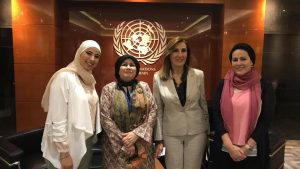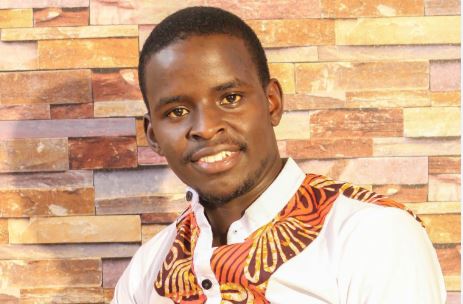Mindfulness meditation is increasingly becoming a powerful tool to bring awareness to the ever present peace that lies within us. Several people have gone to the East to learn these ancient tools and bring them home, to the west, and now, even African countries. Organizations and firms are beginning to recognize the salient fact that peace-building can never be left only to select organizations. In fact, companies are banking their return on investments on the wellness of their most critical resource, the human mind.

World Peace Initiative Foundation (WPI) has moved in to bridge the gap and provide training to people passionate about peace-building and interested to share these ancient practices within their organizations and families. Of importance is the growing need of people to start sharing tools to cultivate inner peace in their own cultures, languages and contexts.
In a recent exclusive interview with the Peace Architect manager at WPI, we uncovered the history and gem behind becoming a peace architect; and how you too can become a partner in peace, to transform your organization; part-time or full-time; with proven benefits to your health, and wellness.
Take 10 with Kuldeep Singh
Q1: Welcome… and thank you for taking your time to show up for this interview. Tell us your name and where you come from.
My name is Kuldeep Singh from India and currently working with World Peace Initiative Foundation since (2010). Before that, I used to work with a government agency in India.
Q 2: Interesting indeed! Share with us your WPI journey…how did you start?
(In a reflective tone) After completing my first 42 days, I attended GPM 6, way back in 2010 with almost none international crew at that moment. Then, WPI was a small organization with one Peace Revolution Project as a flagship program of WPI. I was moved by the desire to spread peace with others, peace builders in action starting with myself. I began to volunteer with the Peace Revolution Project for a year. Then, there were no structure or any form of organization.
We developed a structured platform to enable qualified young peace-builders to join us as a Peace Coach and offer quality and a support system for others undertaking the self-development program online. My biggest encouragement was the ability to help people and see them smile from the work we do.
Q3: Wow! So, how did the first Peace Architect come about?
The first architect was a small group of 10-15 people who supported the Peace Revolution work in their regions and were invited to come back and share in the bloom of the personal transformation somewhere back in 2012.
Then, an idea to form an international team of committed peace builders came to realization and I felt the need to join the team. Wonderful people came in from across the world with a passion to contribute… to the beautiful journey they had started. Everyone did something in their own country in the form of PIPOs (Peace In, Peace Out Seminars). By end of 2013, we had experienced a quick growth in the Peace Architect program, with several structures coming up.
Q4: What are some of the highlights in starting and growing the Peace Architect Program to what it has become today?
First, we felt that our teaching monks were not enough and we needed more people in their local languages who understand the context and could share inner peace tools with their communities. Of course, this came with a challenge to maintain the quality of service; yet, we realized that real society experiences which are a very important element in teaching were a big boost too.
Q5: Such a tremendous decision to make peace-building contextual, where are you now, based on the current projections regarding The Peace Architect Program?

We are holding the 6th training in December 2017 with over 50 people diverse from different countries and continents! Currently, we have close to 100 people becoming peace architect across the world and forming meditation communities to share the inner peace wisdom with their friends, families and community members.
From diversity, there is a common connection in the thirst for peace…and real life transformation! Peace architects are leading several aspects of the summits and training in over 100 countries! Local languages and cultures included.
Q7: Incredible! For people reading this right now and wondering how to join the program, what criteria do you use to become a Peace Architect?
Our first and basic qualification for anyone wishing to become a peace architect is to be passionate about sharing the concept of inner peace.
This person must have attended one of our international fellowships called Global Peace on the Move or Amani.
Afterwards, they are invited to qualify to be peace coach guiding other peace enthusiasts, we call, peace rebels, to complete the 42 days Self Development Program, before they can express their interest to become an architect of peace.
On the other hand,
In the coming years, we have also opened a platform where our partners or anyone interested in guiding meditation and inner peace activities (who haven’t attended our international training) can join and become a peace architect with us after meeting a few requirements that we set.
Q8: So, I understand that one also qualifies for an interview after meeting the requirements set?
Yes! After meeting above requirements, one is called for an online interview to determine their ability and skills to teach and train others on any peace related topics.
The beautiful thing is, our peace architects come from different language groups, professions and careers. For example, this December, we have over 50 nationalities, major speaking languages, professionals and trainers, university professors and major influencers joining to learn the art of facilitating mindfulness meditation spaces.
Q9: After the training, we understand that one gets a certificate, what benefit does the certificate hold to the trainer?
After the training, a trainer has the ability to guide meditation and mindfulness programs in various places. In a world that needs quality and some kind of authentication, the certificate gives one the confidence to organize training with proof that it is affiliated to our organization. The certified trainer can also represent the organization in major training and professional spaces where we are involved.
The certificate is valid for 1 year and is often renewable after taking an online refresher test.

In the community…
We got curious to find out what it looks like; life after becoming a Peace Architect. Watch out for the next episode with real life stories of Peace Architects engagement in the community.
Are you the next Peace Architect of your community? Contact Kuldeep Singh (kuldeep@wpifoundation.org) to get full information of the upcoming training in June 2018!)








